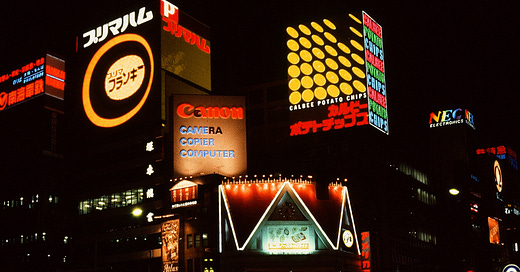A Beast in the Shadows. The Collapse of the Yakuza: A Tale in Three Acts. Part II
The late 1900s was a period of dramatic economic and social change for Japanese society. What led to these changes, and how did Japan’s organised crime groups fit into this post war society?
A Beast in the Shadows
How the Yakuza developed and prospered in the late 19th Century
There is a commonly held belief that the Yakuza are violent criminals who threaten shop owners and terrorise citizens in the streets. The truth is that these organisations are much more subtle in operation.
The culture and hierarchy of a Yakuza family is similar to that of a common family in traditional Japan. The leader of the family is called Oyabun, meaning Father, and beneath him are his Wakashu (children) and Kyodai (brothers). These people are not the Oyabun’s real children or brothers, but instead represent ranks within the clan. An Oyabun’s ruling is absolute, and he is obeyed completely by the members of the clan. In return he offers them protection. The relationship resembles the senpai kohai (big brother, little brother) structure where fierce loyalty is given by the little brother. Aside from the Oyabun, almost all members are both leaders and subordinates, where every senior member has a group of junior members who report to them for various roles.
“A child cannot choose their parents. But we (Yakuza) choose our parents, and we become their children. There have been happy times, tough times, painful times, and exciting times. That’s how life goes. I feel the danger of losing my life. But that is the thing I have to do. For us to follow what we believe in, we have to accept that danger. However, to follow our Oyabun is our way.” - Active Yakuza member
There are 22 organised crime syndicates in today’s Japan. The largest are: Yamaguchi Gumi, Inagawa Kai, Matsuba Kai, and Sumiyoshi Kai. There are smaller families who also function within these larger organisations, and typically fall within the lower levels of the organisations hierarchy. Lower ranking members typically live in the headquarters and are tasked with cleaning and cooking duties for the senior members. As members progress through the ranks, and maintain loyalty, they are given more responsibility.
Unlike criminal organisations in other countries, the Yakuza names and crests appear in plain sight in directories of the buildings that they occupy, and their members are active and visible participants in the life of their host communities.
Punishment
Yubitsume is a ritualistic self amputation of the first bone in the hand, practiced by the Yakuza. The practice of self mutilation is done as a sign of apology by one of the members, for making a mistake that is deemed punishable by higher ranker members. This mistake usually involved violating the code of the Yakuza.
Yubitsume originated in the gambling clans, Bakuto, as a form of punishment for serious offences that did not warrant execution or expulsion. The practice motivated gamblers and members to pay their debts in time, or suffer a worse debt instead.




